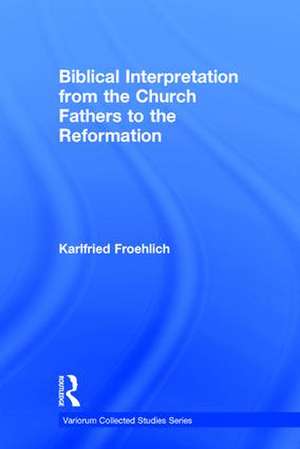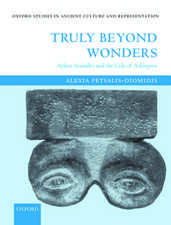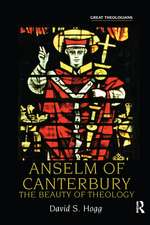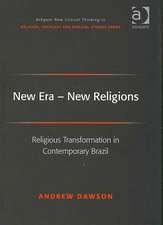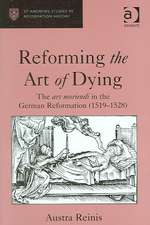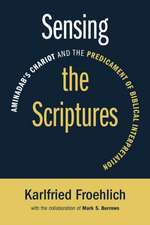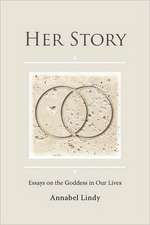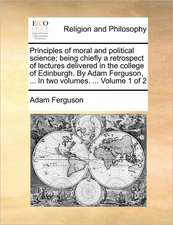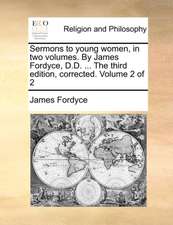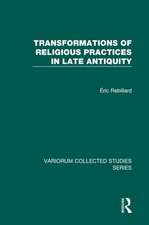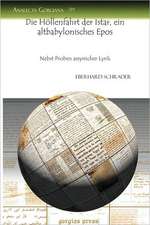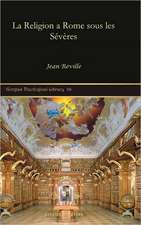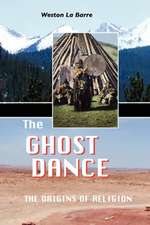Biblical Interpretation from the Church Fathers to the Reformation: Variorum Collected Studies
Autor Karlfried Froehlichen Limba Engleză Hardback – 28 aug 2010
Din seria Variorum Collected Studies
- 9%
 Preț: 938.44 lei
Preț: 938.44 lei -
 Preț: 313.38 lei
Preț: 313.38 lei -
 Preț: 311.41 lei
Preț: 311.41 lei -
 Preț: 311.41 lei
Preț: 311.41 lei - 9%
 Preț: 936.60 lei
Preț: 936.60 lei -
 Preț: 386.77 lei
Preț: 386.77 lei -
 Preț: 299.55 lei
Preț: 299.55 lei -
 Preț: 299.66 lei
Preț: 299.66 lei -
 Preț: 310.22 lei
Preț: 310.22 lei - 9%
 Preț: 938.85 lei
Preț: 938.85 lei - 18%
 Preț: 949.32 lei
Preț: 949.32 lei -
 Preț: 341.55 lei
Preț: 341.55 lei -
 Preț: 343.33 lei
Preț: 343.33 lei -
 Preț: 351.48 lei
Preț: 351.48 lei -
 Preț: 310.55 lei
Preț: 310.55 lei -
 Preț: 311.18 lei
Preț: 311.18 lei -
 Preț: 312.75 lei
Preț: 312.75 lei -
 Preț: 386.77 lei
Preț: 386.77 lei -
 Preț: 320.00 lei
Preț: 320.00 lei - 34%
 Preț: 761.82 lei
Preț: 761.82 lei - 22%
 Preț: 311.46 lei
Preț: 311.46 lei - 34%
 Preț: 737.35 lei
Preț: 737.35 lei - 34%
 Preț: 761.82 lei
Preț: 761.82 lei - 34%
 Preț: 678.62 lei
Preț: 678.62 lei - 26%
 Preț: 246.62 lei
Preț: 246.62 lei - 34%
 Preț: 484.28 lei
Preț: 484.28 lei - 34%
 Preț: 767.11 lei
Preț: 767.11 lei - 34%
 Preț: 761.82 lei
Preț: 761.82 lei - 34%
 Preț: 824.12 lei
Preț: 824.12 lei - 26%
 Preț: 221.62 lei
Preț: 221.62 lei - 25%
 Preț: 224.83 lei
Preț: 224.83 lei - 34%
 Preț: 761.82 lei
Preț: 761.82 lei - 34%
 Preț: 734.09 lei
Preț: 734.09 lei - 34%
 Preț: 736.10 lei
Preț: 736.10 lei - 25%
 Preț: 225.80 lei
Preț: 225.80 lei - 33%
 Preț: 490.15 lei
Preț: 490.15 lei - 34%
 Preț: 484.28 lei
Preț: 484.28 lei - 34%
 Preț: 484.28 lei
Preț: 484.28 lei - 34%
 Preț: 764.66 lei
Preț: 764.66 lei - 34%
 Preț: 761.82 lei
Preț: 761.82 lei - 34%
 Preț: 761.82 lei
Preț: 761.82 lei - 34%
 Preț: 734.09 lei
Preț: 734.09 lei - 31%
 Preț: 472.47 lei
Preț: 472.47 lei - 18%
 Preț: 807.71 lei
Preț: 807.71 lei - 34%
 Preț: 761.82 lei
Preț: 761.82 lei - 34%
 Preț: 761.82 lei
Preț: 761.82 lei - 34%
 Preț: 761.82 lei
Preț: 761.82 lei - 51%
 Preț: 484.28 lei
Preț: 484.28 lei - 34%
 Preț: 484.28 lei
Preț: 484.28 lei - 34%
 Preț: 764.26 lei
Preț: 764.26 lei
Preț: 265.60 lei
Preț vechi: 352.43 lei
-25% Nou
Puncte Express: 398
Preț estimativ în valută:
50.84€ • 53.37$ • 41.100£
50.84€ • 53.37$ • 41.100£
Carte tipărită la comandă
Livrare economică 30 ianuarie-13 februarie 25
Preluare comenzi: 021 569.72.76
Specificații
ISBN-13: 9781409403654
ISBN-10: 1409403653
Pagini: 366
Dimensiuni: 150 x 224 mm
Greutate: 0.77 kg
Ediția:New.
Editura: Taylor & Francis
Colecția Routledge
Seria Variorum Collected Studies
Locul publicării:Oxford, United Kingdom
ISBN-10: 1409403653
Pagini: 366
Dimensiuni: 150 x 224 mm
Greutate: 0.77 kg
Ediția:New.
Editura: Taylor & Francis
Colecția Routledge
Seria Variorum Collected Studies
Locul publicării:Oxford, United Kingdom
Public țintă
Academic and PostgraduateCuprins
Contents: Preface; Christian interpretation of the Old Testament in the High Middle Ages. The Glossa Ordinaria: Walafrid Strabo and the Glossa ordinaria: the making of a myth; Makers and takers: the shaping of the Biblical Glossa ordinaria; The Glossa ordinaria and medieval preaching; An extraordinary achievement: the Glossa ordinaria in print; The printed gloss; The fate of the Glossa ordinaria in the 16th century; Martin Luther and the Glossa ordinaria. Peter and Paul: Fallibility instead of infallibility? A brief history of the interpretation of Galatians 2:11-14; Saint Peter, papal primacy, and the exegetical tradition, 1150-1300; The chair of Peter: thoughts on an ancient Christian concept and its history; Romans 8:1-11: Pauline theology in medieval interpretation; Paul and the Late Middle Ages; Appendix; Indexes.
Notă biografică
Karlfried Froehlich was Benjamin B. Warfield Professor of Church History at Princeton Theological Seminary, Princeton, USA, until his retirement in 1992.
Recenzii
'Froehlich displays his mastery of the scholarly literature in his survey of 'Christian Interpretation of the Old Testament in the High Middle Ages' - the opening piece in this volume - and readers will need to be familiar with Latin to follow his argument in later essays. He is no pedant, though, and his easy style - especially in the lectures and in an account of his search for the 'author' of the Glossa - brings the world of medieval exegesis to life.' Lutheran Quarterly
Descriere
The history of biblical interpretation has attracted considerable attention in recent decades. One area of research in which even the most basic questions are still under debate is the phenomenon of the biblical Glossa Ordinaria, the standard Bible commentary used by Christian theologians from the twelfth century to the Reformation. Part I unites the author's major contributions to Glossa studies - its origin, its false ascription to Walahfrid Strabo, its use among the preachers of the thirteenth and fourteenth century and the Reformers, both Catholic and Protestant, of the sixteenth. Part II concentrates on the image of two central New Testament figures, the Apostles Peter and Paul, in biblical exegesis. The studies illuminate the pivotal role in the history of the church played by certain shifts in the understanding of Petrine texts, and trace conflicting tendencies in the interpretation of Paul down to the Reformation of the sixteenth century.
